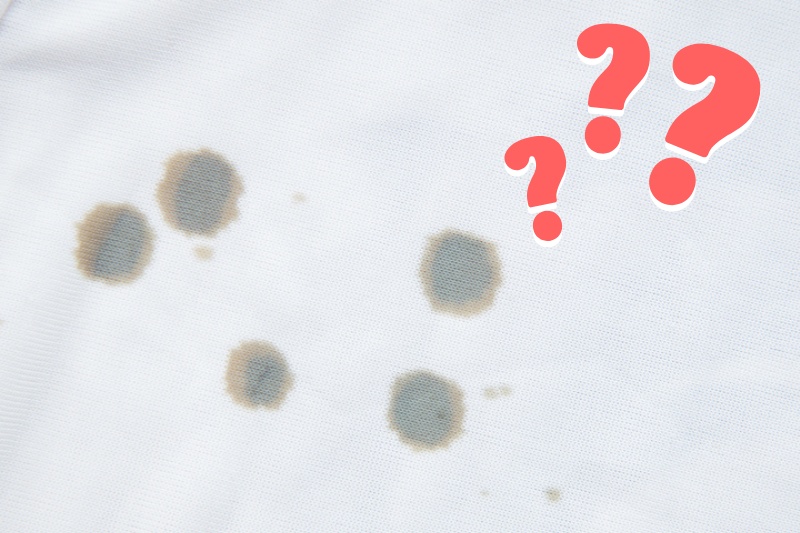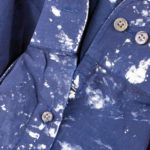Splashed by cooking oil while making dinner? Working with oily machinery on a daily basis?
Whatever the reason your clothes have fallen victim to greasy stains, there are several tried and tested methods you can try to help them look as good as new.
In this article, we’ll provide a step-by-step guide on how to get oil and grease stains out of clothes, with tips for treating both brand new stains and stubborn set-in marks.
Before covering how to treat them, it’s worth mentioning that oil stains need to be treated as quickly as possible.
Unfortunately, no matter how many times you wash them, oil stains are unlikely to come out of clothes during a standard wash.
If left untreated, you’ll be stuck with a dark stain that will be difficult to remove – especially on synthetic materials – so act fast!
How to Get Oil Stains Out of Clothes
Step 1: Blot the stain
The first step to getting oil stains out of clothes is to clear up as much of the spillage as you can to stop it spreading.
Start by laying the garment flat on a table or worktop and place an old towel in between the layers of fabric, behind the stain to stop it seeping through to the back of the item.
Use paper towel to blot the stain until it has absorbed all of the oily liquid.
Step 2: Soak up the grease
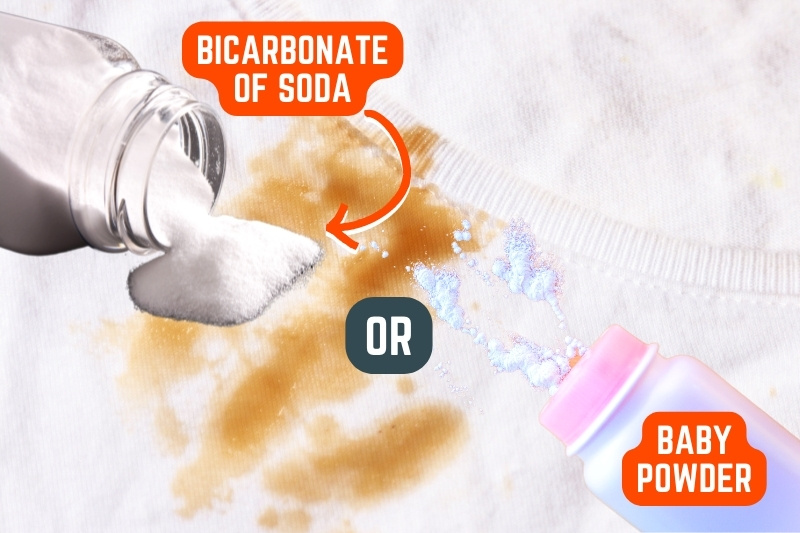
Next, you want to draw as much of the remaining grease out of the fabric as possible. The best way to do this is with bicarbonate of soda or baby powder, though even salt will work in a pinch!
Simply sprinkle a generous amount of powder directly onto the stain until it is fully covered.
Leave for 20-30 minutes to give the powder time to absorb as much of the oily substance as possible, then brush it off.
NB: If you’re treating a delicate item, leave the bicarb on overnight and then wash the garment on a gentle 30°C cycle, skipping the next steps.
Step 3: Spot-treat the stain
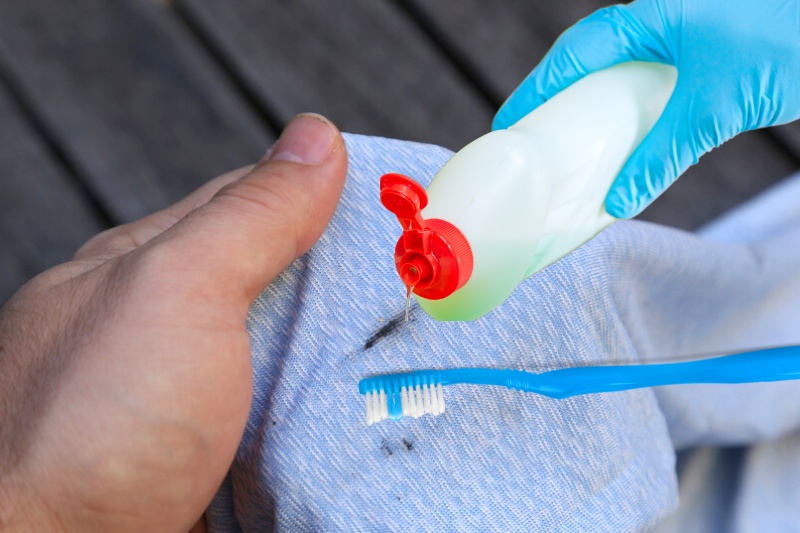
After brushing off the powder, you want to spot-treat the remaining stain with washing up liquid. Designed to break down grease, this stuff is also ideal for treating oily marks on clothes, yet gentle enough not damage the fabric.
Alternatively, you can use liquid laundry detergent or even shampoo.
All you need to do is pour a small amount of the liquid soap onto the stain, rub it in with your finger and then leave it to work for 10 minutes.
When the time’s up, take an old toothbrush and gently scrub the stain using a circular motion to help dislodge the oil from the fibres.
Step 4: Rinse, then wash on a hot cycle
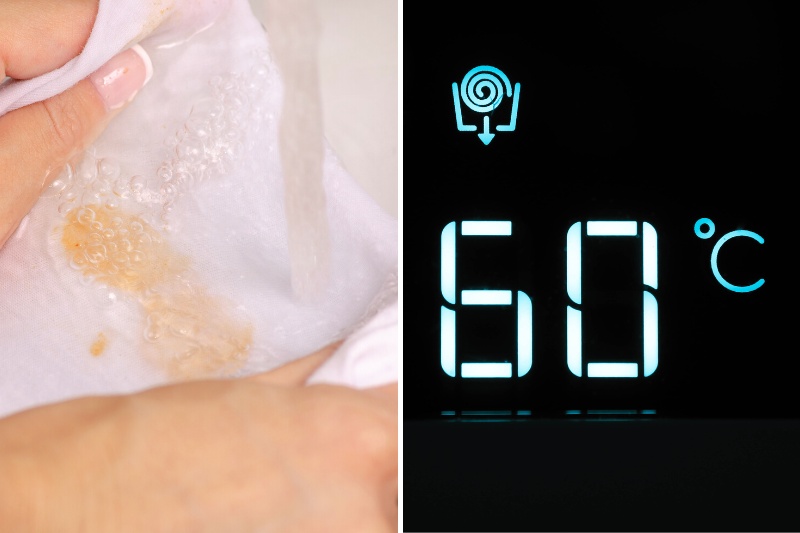
Next, rinse the washing up liquid off by running warm water through the back of the stain to help push the oil out. Then, wash the item on a hot cycle, on its own.
Unlike protein and tannin stains, oil will start to break down in warm water so choose the hottest cycle you can.
The temperature will depend on the fabric and its care instructions, so be sure to check the label! Generally speaking, you should choose 60°C for cotton and 40°C for synthetics.
You can also try adding a cup of white vinegar to the rinse cycle for extra stain-removing power.
NB: If you used liquid detergent, there’s no need to rinse the item before washing it.
Step 5: Dry carefully
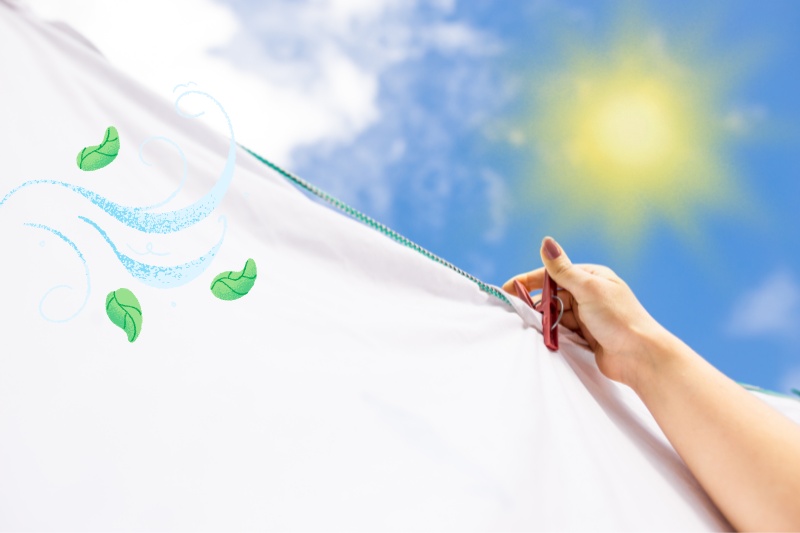
To dry the item, we’d suggest line-drying or air-drying indoors.
The reason for this is that if there is any grease left in the fabric, the high temperatures used in tumble dryers could bake the stain into the material permanently. Plus, the fire risk will increase.
With that in mind, it’s best to air dry the garment and check the stain is completely gone once it is fully dry, as checking for remnants of an oily stain while the item is wet will be much harder!
If the stain is still visible after washing, simply repeat the process until you’re happy with the result.
How Do You Remove Set-In Grease Stains?
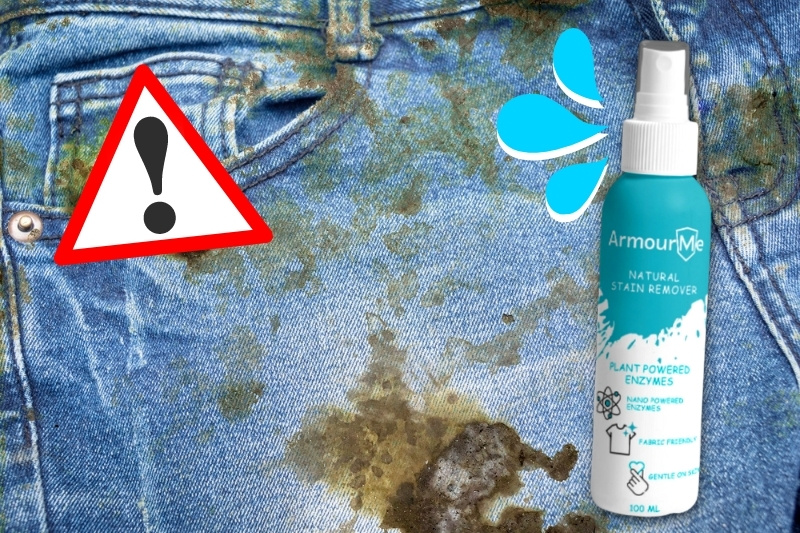
If you spot a mark on an item you’ve already dried, don’t panic.
While bicarbonate of soda won’t be as effective at drawing out the oil, washing up liquid should still prove effective for treating set-in grease stains, so simply follow steps 3-5 above.
If not, an enzyme-based cleaner like ArmourMe Stain Remover will help to break up the residue and free the stain from the fibres.
For particularly stubborn marks on cotton clothing, you can also try applying rubbing alcohol to the back of the stain before washing it.
However, do not use these products on synthetic materials as they may not be able to withstand the solvent’s chemicals.
Likewise, don’t be tempted to wash synthetics on a hot cycle if the care label says otherwise, as you could melt the fibres, causing permanent damage. Instead, stick to washing on the warmest setting recommended, even if you have to repeat the process several times to remove the stain.
Want more advice for removing tough stains from your favourite clothes? Learn how to remove nail polish, chocolate, ink, blood and more in our laundry tips section.

A proud Yorkshire lass with a love for movies, music and cosy nights in! Once a self-confessed avoider of cleaning, she’s always on the lookout for new ways to make household chores as quick and simple as possible.
